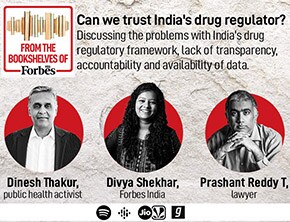
Our top reads of the week
From the chronicles of the rise of sexual harassment complaints in India Inc to the effect of the influx of foreign clubs and leagues in the Indian football ecosystem, here are our top reads of the week
 Every week, catch up on the best long form stories from Forbes India. Often peppered with our binge-worthy podcasts, videos or infographics too. Image: Shutterstock
Every week, catch up on the best long form stories from Forbes India. Often peppered with our binge-worthy podcasts, videos or infographics too. Image: Shutterstock
 1) Threat continues
1) Threat continues
Work-from-home had resulted in a considerable reduction in sexual harassment complaints at Indian organisations. Now, as offices open, they have begun to rise again. The total number of sexual harassment complaints at workplaces climbed by 27 percent in the financial year ending March 2022 compared to the previous year. Despite increased public awareness and efforts by companies to sensitise employees, sexual harassment continues to plague Indian workplaces, stripping people of their dignity. Though companies are taking efforts to make workplaces diverse, harassment, violence, exploitation and bias based on gender do not make offices safe, and pose a threat to the equal participation of women in the workforce, thus bringing disparity in the economic and social norms. Here’s a look at how India’s top companies perform on this parameter. Read more
 2) Blossoming in winter
2) Blossoming in winter
The Indian edtech sector saw exponential growth as schools went offline because of pandemic-induced lockdowns. Some startups in the sector achieved the coveted unicorn status. But as the world got better at dealing with the pandemic and economies started reopening, the edtech ecosystem had to pivot on as schools got back to business. The platforms that offered K-12 classes online during the stay-at-home period of the pandemic are today finding it challenging to meet the changing demand. On the other hand, platforms offering test preparation, certification and skilling are flourishing in a sector that largely faces a slump as students head back to classrooms. Read more
 3) Razor-sharp checkout
3) Razor-sharp checkout  1) Listen: Can we trust Indian drug regulators?
1) Listen: Can we trust Indian drug regulators?  2) HFCL’s 5G gameplay
2) HFCL’s 5G gameplay  3) Dreaming of big leagues
3) Dreaming of big leagues 




